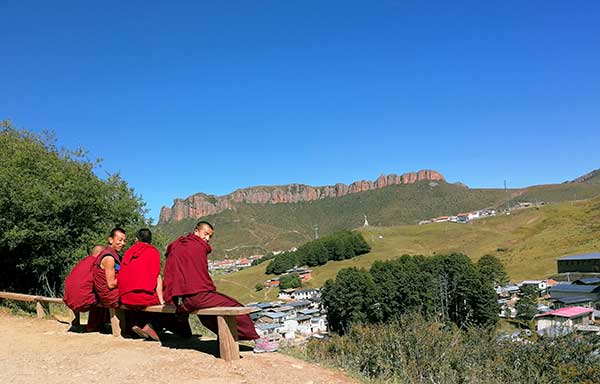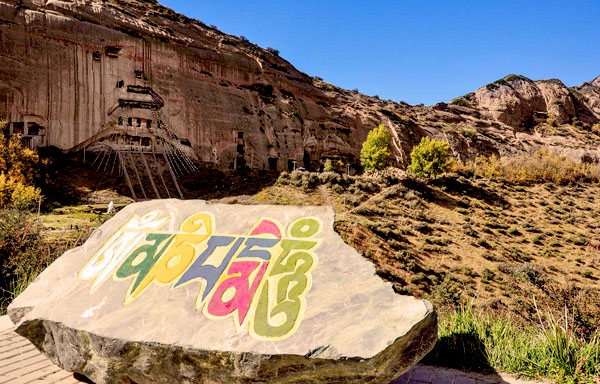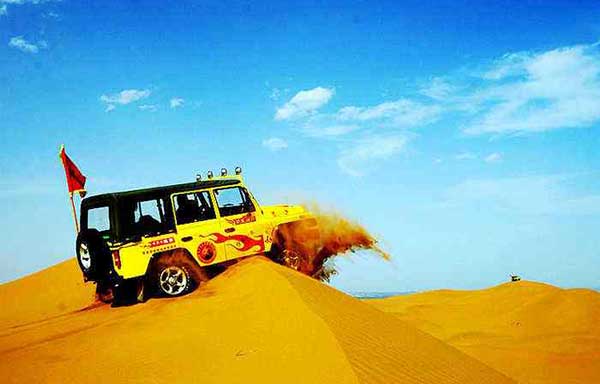- By admin
- In SilkRoadKnowledge
- 2017-12-11
a brief historical overview of the silk road

Historians look back at the events of the past and use them as a tool for analyzing the state of the world today. Civilizations have dealt with numerous problems concerning their environment, natural resources, and other civilizations. For centuries, people have either dealt with outside pressures and survived, or perished under its weight. Civilizations that flourish despite great odds are studied and used as case studies for how we should deal with problems of the present day.
The civilizations that developed in China and Mesopotamia are perfect examples of how people dealt with other cultures. There was a time when the two lived in complete ignorance of each other, separated by a vast and hostile wasteland known as Central Asia. Eventually, the civilizations of Western Asia and China would come in contact by way of an overland trade route known as The Silk Road. This article takes a historical outlook on this ancient route from its birth before Christ to its lingering legacy in this present day. The inevitable encounter between East and West some 2000 years ago provides us with a guide for dealing with twentieth century effects of globalized economy, culture, race, and nationality. The vast amount of ideas and information that we encounter over the world wide web is not unlike the vast amount of ideas and information encountered on the Silk Road somewhere between China and the west.
Within Central Asia lies one of the most inhospitable deserts in the world. Here, there are little or no natural resources. In a land with little water, there is equally little vegetation or wildlife. Sand storms whip the sandy surface of this region burying anything in its path. This is the Taklimakan dessert, but local people call it "the Land of Death", or "the Land of Irrevocable Death". Such people rarely intruded into the interiors of the Taklimakan dessert. Instead they stuck to the path of the Silk Road and other routes which skirted the edges of the dessert. The Taklimakan has for centuries acted as a natural barrier between the East and West, however, it was not the only thing preventing contact.
The land surrounding the Taklimakan is equally hostile. To the northeast lies the Gobi Dessert, which is less dry and desolate than the Taklimakan, but nonetheless a formidable boundary. To the south lie the largest mountain ranges in the world - the Himalayas, Karakourum, and Kunkun. These giants separate Central Asia and the Indian sub-continent. Still another barrier separating east from west is the Pamir "Knot", a conglomeration of several mountain ranges including the Tianshan and Pamir ranges. Approaching the area from the east, the least difficult entry is along the 'Gansu Corridor', a relatively fertile strip separating the Mongolian plateau and the Gobi from the Tibetan High Plateau. Coming from the west, or south, travelers were forced to make their way through icy passes along the Pamir "Knot" and the Himalayas.
Chinese and Western civilizations developed on opposite ends of the continent in areas that were able to support life. The western end of the trade route developed first along the Fertile Crescent of Mesopotamia, while the eastern end developed more slowly due to the difficult terrain. The Chinese civilization advanced during the Qin Dynasty, when individual states unified under a central government located at Changan (present day Xian). Exploration of the west by the Chinese did not begin until the Han Dynasty when the emperor sent Zhang Qian on a mission to form an alliance with the Yuezhi tribe in the west. He began his journey in 138 BC and returned to his emperor's court 13 years later after being captured twice by an enemy tribe. Although Qian failed to secure an ally in the west, he brought back important information about a new breed of horse and hitherto unknown tribes in the west. More expeditions were sent west to retrieve horses and objects of beauty for the emperor. By this process, the route to the west was opened up. Many scholars regard Zhang Qian as the father of the Silk Road, but even before his expedition, small amounts of Chinese goods were reaching the west.
When considering the nature of the Silk Road, one must remember that there was no one silk route, but many routes, roads, and paths that head in an east-west direction. Some routes were well developed and relatively free from bandits, while others were less protected and had fewer oasis towns which offered shelter from the elements. A particular route along the southern edge of the Taklimakan was quite risky, but it took less time to cross. One thing that many of the routes had in common was a meeting point in Kashgar (Kashi). This city, located at the foot of the Pamirs, became one of the most important trade centers in Central Asia. This was the halfway point along the Silk Road where most traders sold their loads to middle men who would make the final transaction further down the line. So in reality, few traders actually made the transcontinental journey along the route; It was the goods that eventually made it from one side of Asia to the other.
The Silk Road did not exist for the sole purpose of trading silk. Although silk was most remarkable for westerners, it was only one of many items that were traded throughout the history of the Silk Road. Gold, precious metals, ivory, precious stones, and glass went towards China, while firs, ceramics, gun powder, jade, bronze objects, lacquer, and iron went west. All of these items went overland by way of caravan which consisted of anywhere to 100 to 1000 camels, each loaded with roughly 500 pounds of goods. Such caravans were extremely valuable and vulnerable to bandits; as such they needed escorts and a secure place to camp each night.
The development of Central Asian trade routes caused some problems for Han rulers in China. Bandits took advantage of the terrain to plunder trade caravans along the Gansu Corridor. As a result, trade began to suffer great losses at the expense of merchants at either end of the route. Han rulers answered this threat by constructing forts and defensive walls along part of the route. These sections were later combined to form the 'Great Wall' which still stands today as a testament to human achievement and suffering at the hands of determined emperors. Unfortunately, the wall along the northern side of the Gansu Corridor was not as effective as intended, as the Chinese periodically lost control of sections of the route. It became apparent to later Han rulers that in order to control the route, especially the Taklimakan region, a permanent local government had to be established. Once a local government in the Taklimakan region was secure, the growth of settlement along the routes really began to take off. Under the protection of the Han Empire, the settlements were able to reep the benifits of secure and reliable trade. They also absorbed a lot of the local culture, and the cultures that passed them by along the route.
Religion was the most important commodity to be carried along the route. The religions of Central Asia owe much of their existance to the trade routes that carried them to Tibet, the Taklimakan region, and eventually China's ancient capital Changan. Buddhism came into China from India as early as the first century AD, and changed the face of Silk Road towns with monasteries and pagodas. Buddhisms influence was also seen in the art of the era, as more artists began using the image of the Buddha in their work. Later, Islam made it into the heart of China much the same way as Buddhism did before, but as we shall see, its ultimate effects contributed to the Silk Road's eventual decline. Christianity too was carried by European missionaries and took root in Tang China in 638 AD.
The Tang Dynasty was the height of the Silk Road's importance. Individual states assimilated thus decreasing the outside threats. Buddhist manuscrips and artwork continued to pour into China changing the look of the civilization as a whole. By 742 AD, the Changan had become an exotic metropolis, boasting a population of nearly two million, five thousand of which were foreigners from along the Road, as well as Japanese, Koreans, and Maylays. Starting in 1206, the Mongols led by Genghis Khan conquered a huge ptition of Asia. In China they established the Yuan Dynasty which lasted only about 160 years, but nonetheless was the center of the largest empire that the world has seen. The Mongol Empire enveloped the whole of Central Asia from China to Persia, and stretched as far west as the Mediterranean. Under the Mongols, the Silk Road became an important path for communication between different parts of the empire, as well as a protected trade route. The Mongols remained relatively sympathetic to different religions, nationalities, and creeds. It was at this time that the first Europeans began arriving in Mongol cities. Marco Polo is probably the most famous westerner to have witnessed the court of Kubilai Khan. He traveled extensively throughout China and brought back to Europe some of the first factual information about East Asia.
Many factors are attributed to the decline of the Silk Road. The Mongol Empire began to crumble as early as 1262, due to quarreling among regional Khans. In 1368, the Ming Dynasty regained control of China and immediately emphasized nationalism and isolationalism in an effort to prevent future invasion. With the revival of Islam in the west and Chinese nationalism in the east, the barriers on the land route once again rose. A revival of Islam in Central Asia led to the destruction of non-Islamic artwork and architecture in key cities. Trade by sea became less dangerous and more profitable than the long and arduous land route. Also, the demand for silk began to slump as European production was perfected and passed on. Perhaps the greatest factor contributing to the decline of trade along the Silk Road was geography. Maintaining existing settlements along the Taklimakan and Gobi deserts became increasingly difficult during that era of political unease. A lack of natural resourses proved too stressfull for many dessert cities along the southern end of the Taklimakan region. Maintainence of wells, streets, and buildings was neglected in light of ivasion from bandits, lack of trade, and a sometimes imposing religion from the West. Soon the old towns and religious sites were buried deeper beneath the sands.
Renewed interest in the Silk Road began at the end of the 19th century. Imperial Great Britain and Russia competed for trade opportunities in Kashgar and other surviving cities. However, interests soon turned toward archeological finds in the Taklimakan by both British and Russian surveyors. The discovery of ruins, ancient artifacts, buried cities, and manuscripts captured world wide attention. The treasures of the ancient Silk Road are now scattered around museums in more than a dozen countries. The Silk Road today is a series of paved roads and train tracks that connect east to west along the paths of the old routes. Trade now takes less time and doesn't incude silk as a major trade item; consumer trade and heavy industry dominate the market. And in the desert, progress has been made in controling the shifting sands, and recently discovered oil reserves have once again encouraged developement in the Taklimakan region.
The historical Silk Road repersents for us a time in history where people were forced to deal with cultural, national, and racial differences. We look back at the historical Silk Road for guidance as we try to face problems like discrimination and religious rights. We here at Humboldt State University refer to the Silk Road not only as a trade route, but as a metaphore for the age of information in which we live. The World Wide Web provides a vast sea of information in the form of ideas, points of view, pictures, stories, and reports of occurances around the globe. In an instant, we can talk with someone in Saudi Arabia or China (so long as they have a computer) and encounter a foreign culture and way of life, just like people did on the Silk Road a thousand years ago, somewhere between China and Europe.
Related destinations
Why Choose Us?
We are the top Silk Road tour operator based in Dunhuang, China. We focus on providing well designed Silk Road China Tours with resonable price and thoughtful service.
- Easy & carefree booking
- The best value
- Great travel experience
- Locally operated
Hot Tours
-

6 days Gansu tour to Binglingsi, Xiahe and Langmusi
Tour type : Private tour Price : from *** Destinations : Lanzhou - linxia - Xiahe - Langmusi - Hezuo - Lanzhou -

12 Days Gansu Highlights Tour
Tour type : Private tour Price : from *** Destinations : Xian – Tianshui – Lanzhou – Xiahe – Langmusi – Hezuo – Zhangye – Jiayuguan - Dunhuang -

10 Days Silk Road Classic Tour
Tour type : Private tour Price : from *** Destinations : Xian - Zhangye - Jiayuguan - Dunhuang - Turpan - Urumqi -

5 Days Zhangye - Alxa youqi Highlights Tour
Tour type : Private Tour Price : from *** Destinations : Zhangye - Alax youqi - Zhangye

